A brief background on TASER:
TASER has become one of the golden standards in less-than-lethal tools, being trusted by Law Enforcement across the country. Featured prominently in media, episodes of COPS, or during body cam breakdown videos- but TASER has taken strides in expanding its market beyond first responders over the last decade. Utilizing electricity to produce a debilitating on-target effect, TASER not only innovated but also dominated the less lethal space.
The commercial market has long had access to two common, less lethal self-defense tools, one being OC spray, and the other being stun guns wrongly labeled as “tasers”. This distinction is important for later.
Before we get into the specifics of the device, let’s first talk about where a taser fits in the self-defense toolbox. I believe that the ranged products Taser offers do give a significant advantage over traditional “stun guns” and even OC spray in certain ways. It is important to make the distinction that I believe this is not a replacement for a quality firearm and training. Tasers do give the everyday person an additional option and offer something that can sometimes be carried in locations where firearms may not be legal. How this fits into a specific self-defense system and philosophy depends on the end-user.
How TASERS work:
The way most TASERs work is by firing two pronged probes down range – these barbs stick into the target and produce an arc that, when passed through the human body, inhibits neuromuscular function. The reason this is so effective is that the barbs cover a large distance on the body, giving the electricity space to affect a great area on target.
Where this differs from stun guns is that they can only arc electricity as far as the device’s physical footprint. When the barbed probes fire from a taser device, they separate as they travel down range- this critical distance between probes is used to incapacitate a would-be aggressor better. They also offer the function of acting as a contact stun device with the cartridge removed.

This key functional difference is in part what makes TASER stand out. Other considerations, such as quality, reliability, and user service, make the comparison to run-of-the-mill stun guns at gas stations a waste of time – Taser devices outclass them in every way.
Tasers, a historical device that most folks know is the X-26, this has been used by law enforcement for years and is instantly recognizable. They fire replaceable cartridges (which come in different models, rated for different ranges) and can be used as a contact stun gun for compliance if the cartridge is removed. These devices are somewhat the Crown Victoria of police energy weapons; however, Axon/Taser has since released several generations of new devices.
Making a commercially viable device:
To help bring these capabilities to consumers, in 2016, Taser introduced the TASER Pulse. This device sought to bring the performance and range of their legacy products to the consumer in a portable package that is more convenient for carry. The Taser Pulse 2 is the current version of this product, featuring a similar form factor and loaded with notable features that bring a lot to the table for those looking to use it as a self-defense tool.
At the time of writing this article, the PULSE 2 MSRPs for $399.99, which is substantial, especially when compared to OC spray, but the cost is totally understandable given the nature of TASER devices. While OC spray and this device work differently and each has pros and cons, that is likely going to be the next best alternative as a less-than-lethal tool.
The Pulse 2’s footprint is roughly the size of a compact handgun. This makes it carryable; it is worth noting that this is cumbersome as a second on-body self-defense tool if you are already carrying a firearm. It is small enough to fit into most bags without dominating the primary storage space, and it works as a compromise.
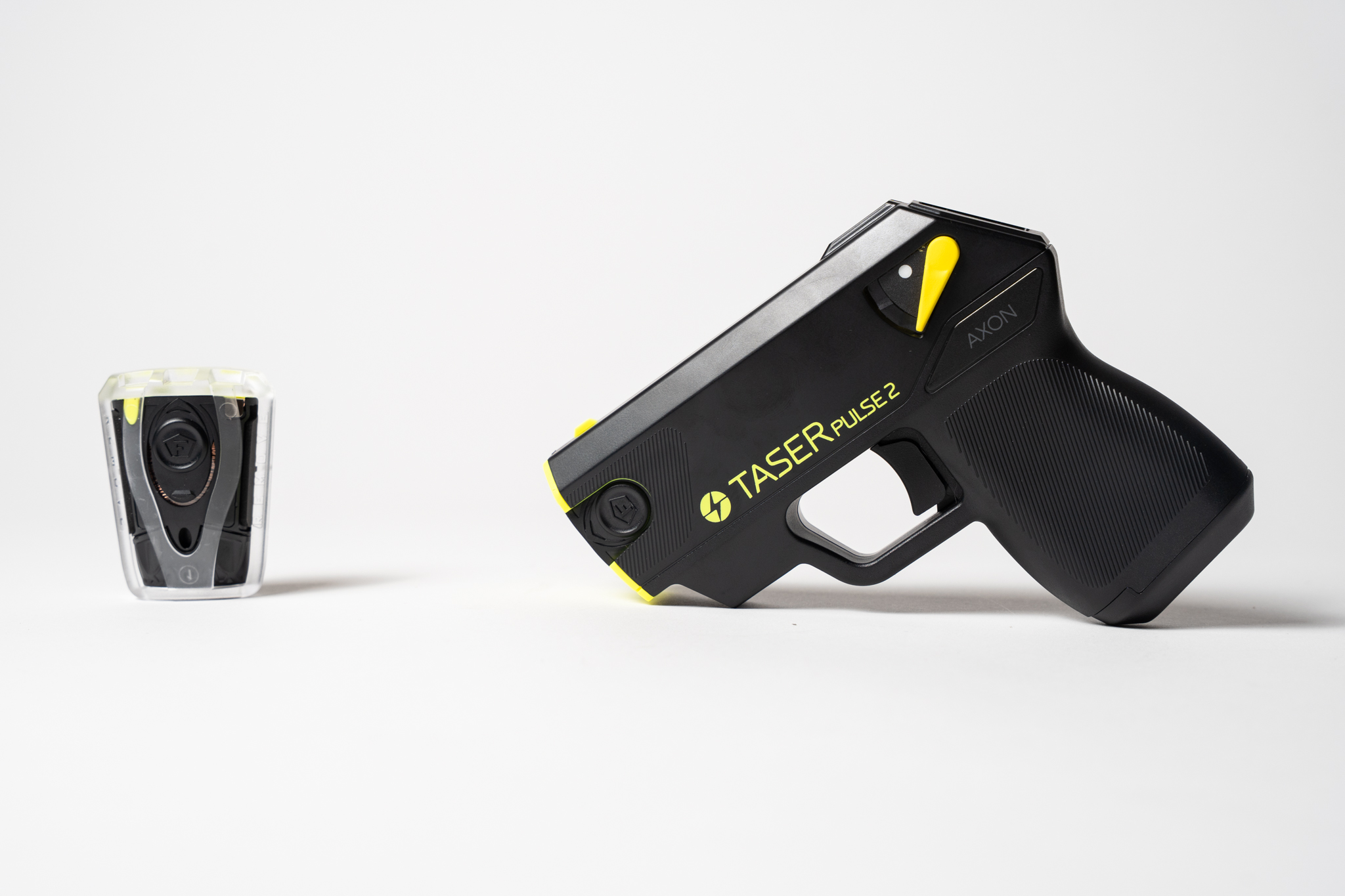
The TASER Pulse 2 uses replaceable cartridges that are similar to what people may know on law enforcement models. TASER advertises a 15-foot effective range, and the cartridges can be removed to utilize the Pulse 2 as a contact device.
The max output of a Pulse 2 is 50,000 Volts, which seems like a lot; however, in practice, Taser advertises that only about 2,000 volts enter the human body when deployed in most cases. This voltage is output in a very low current, precise waveform that TASER uses to claim their energy weapons “are tested and proven to have a reliable cardiac safety profile.”
What comes in the box:
Taser ships Pulse 2 devices with everything you need to start gaining confidence with the device.
- Conductive training target
You can get a practice fire in with the supplied target and additional cartridge. This is absolutely something you should do if you are relying on this tool in a defensive capacity. The battery is pre-installed and can be replaced down the road via a sliding door located on the bottom of the grip. Taser sells additional cartridges and replacement batteries on their website.
To build on training, TASER has partnered with USCCA to provide training curriculum. At the time of writing this article this resource is not released, but it is great to see them continue building support for the end-user.

The quick start guide includes a basic how-to-use card and some marketing materials that link to online resources Taser offers. It also included a “protected by TASER” sticker that they suggest displaying in a prominent area. I cannot say that broadcasting this sort of thing is a good idea in any case I can think of. Taser has a very thorough manual online that I believe is worth looking through if you are considering purchasing this product.
Firing and downrange effect:
To arm the device with a cartridge inserted, simply slide the thumb safety to the upward (fire) position. Once the device is turned on a green light will appear on the rear and both a red visible laser and white light will kick on. The green light on the rear also serves as a battery level indicator; if it shows yellow you are at 30-85% battery life, if red you need to replace the battery.
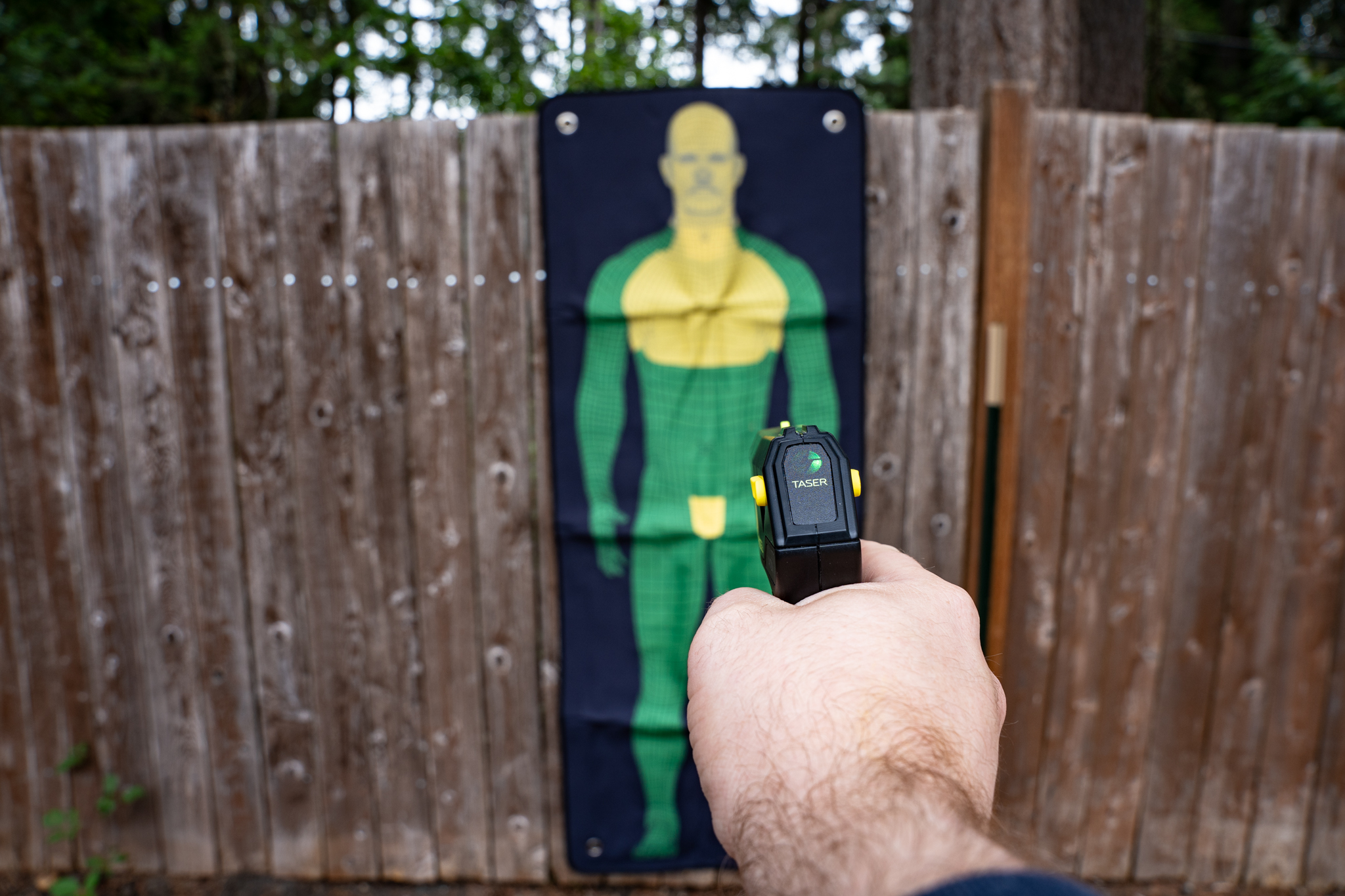
The built-in visible light is nice for target visibility, however, it is dim when compared to common weapon lights. The red aiming laser is visible, but extremely faint during daylight hours. If you cannot see the laser, the Pulse 2 uses traditional pistol sights with a hi-vis yellow front sight, making it very intuitive if you have ever shot a handgun with iron sights.
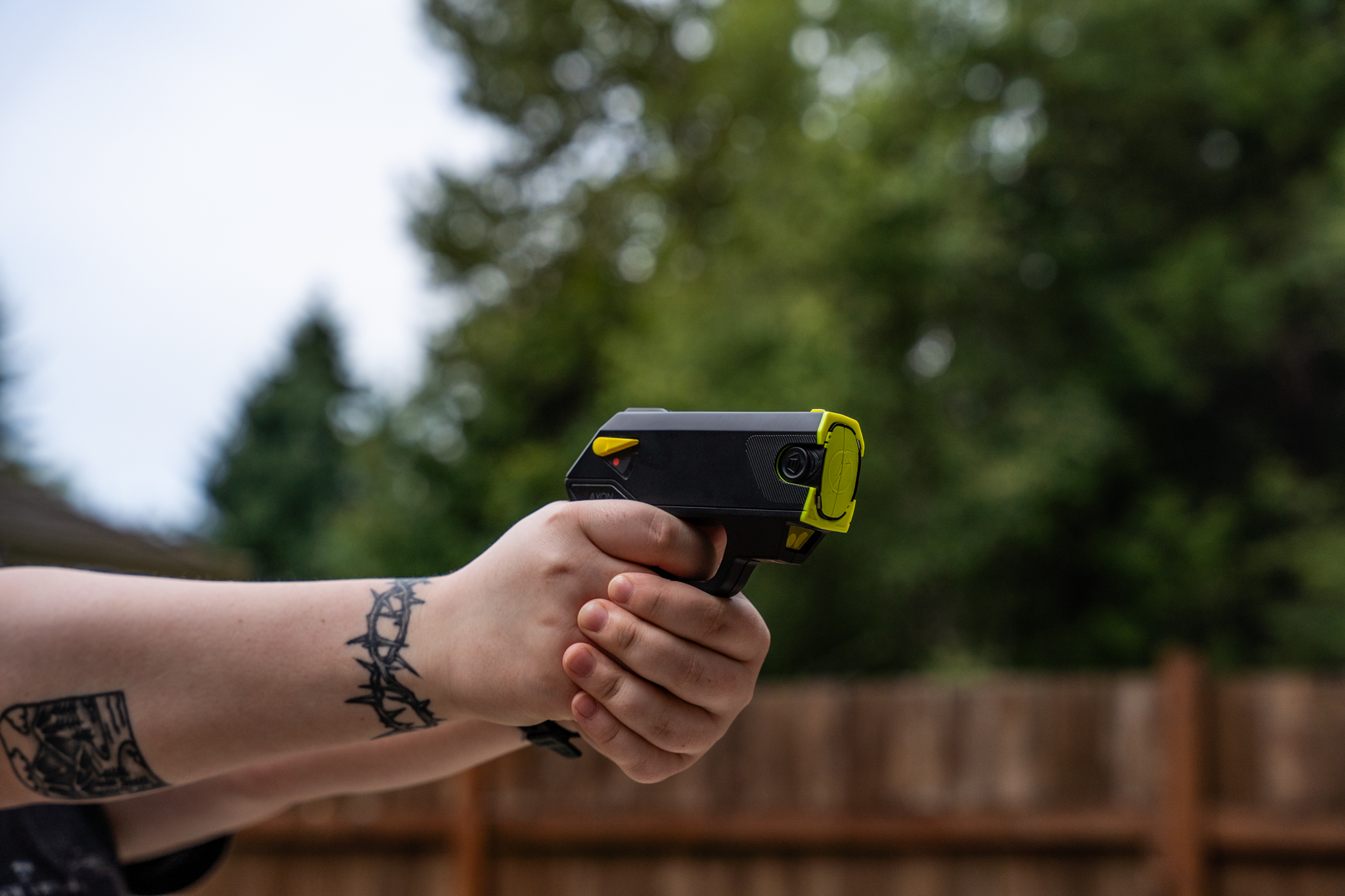
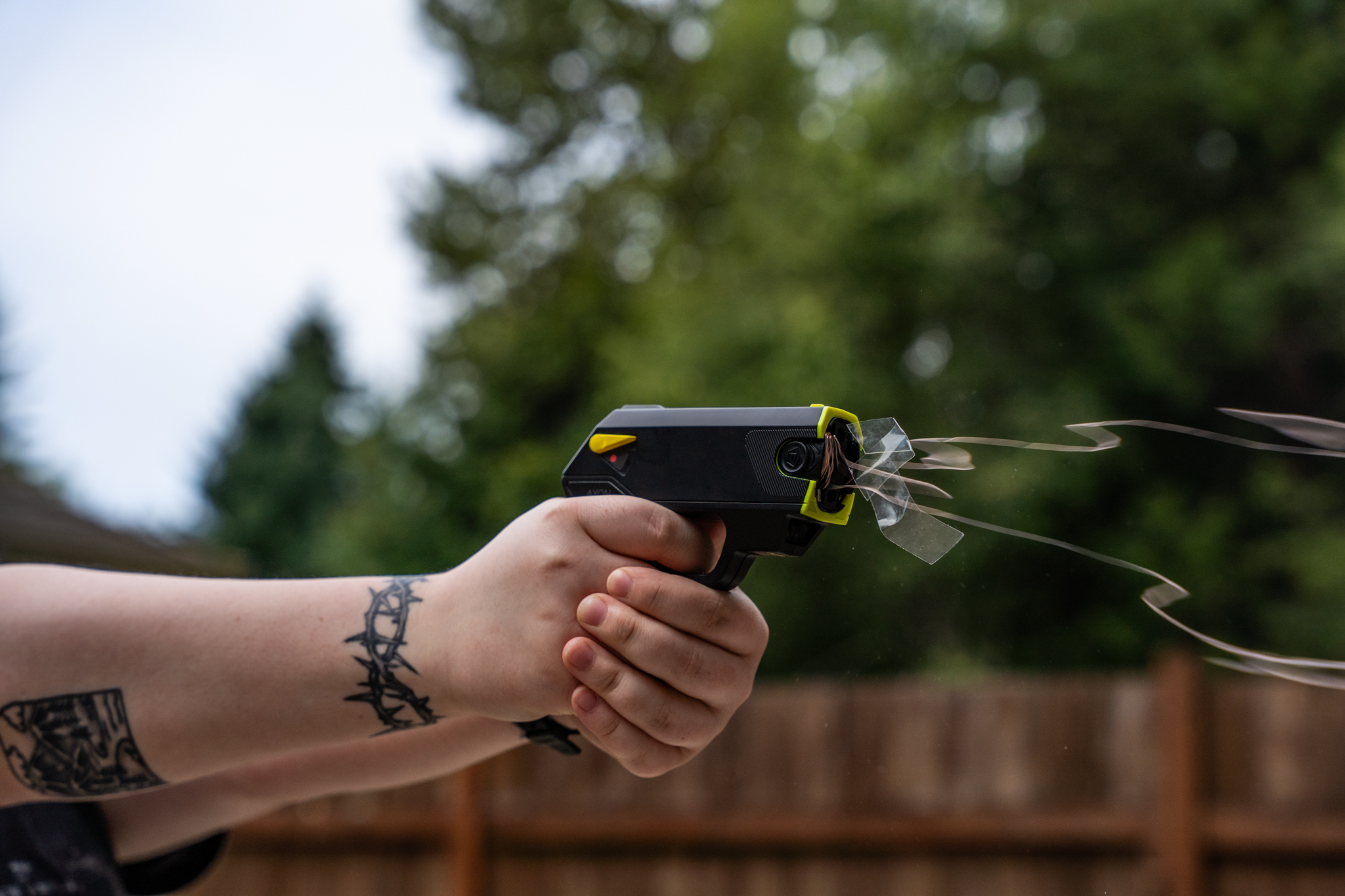
When the device fires it lets off a loud pop similar to a fire cracker, this charge propells the probes, wire, and tracible confetti downrange.

Something I found interesting is the confetti- these round pieces of paper are all printed with codes that can be traced back to the device.
In testing the device at 3 (fired from a retention position),7.5, and 15 feet, you can clearly see how the barbs/probes begin to separate over time. The target used is an AXON Law Enforcement training target. The reason for using this target rather than the supplied one is that it can withstand repeated hits in testing without tearing.

At 3 feet fired from retention, the device showed 3.7” of probe divergence.
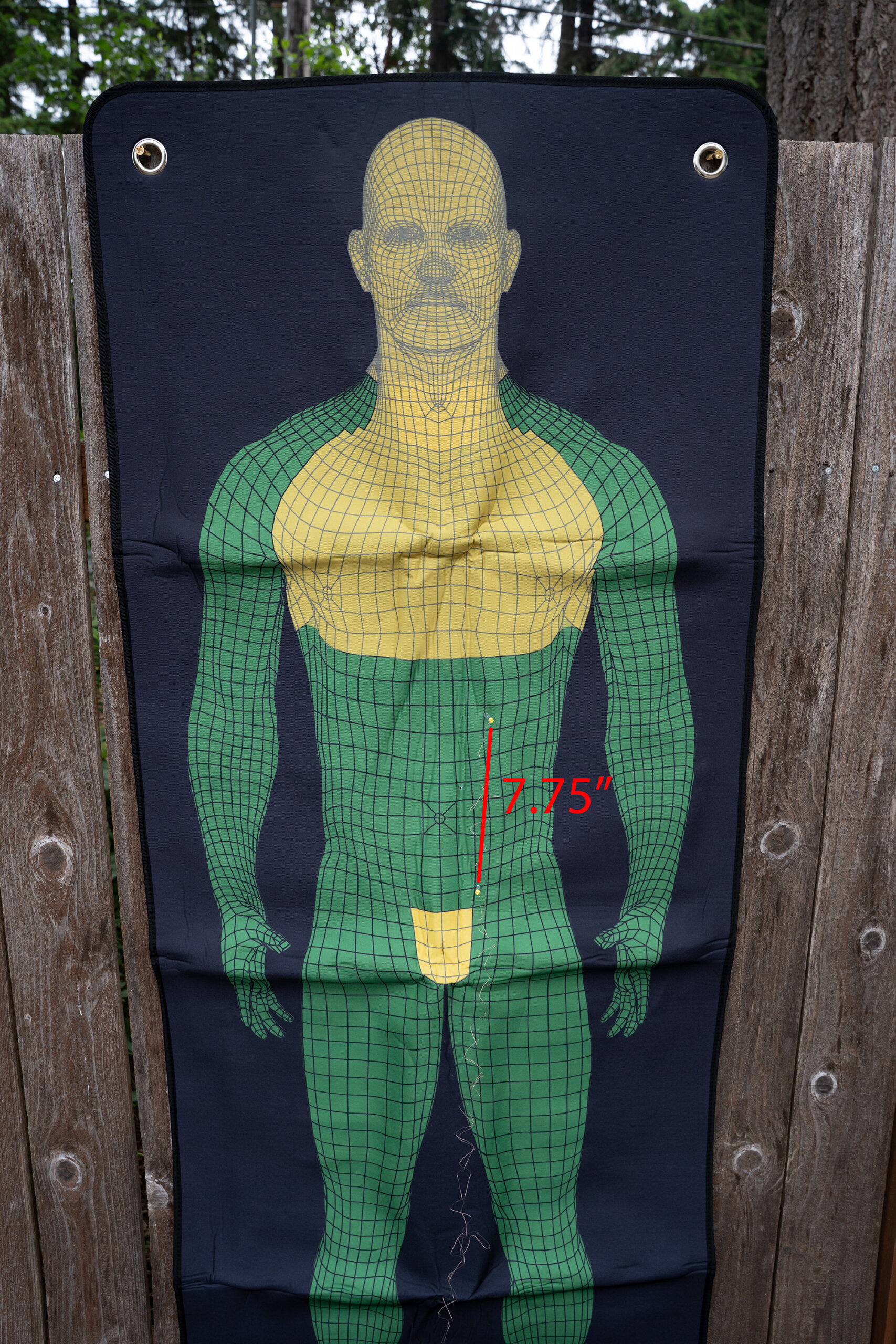
At 7 feet, fired from a standard Weaver position, the device showed 7.75” of divergence.
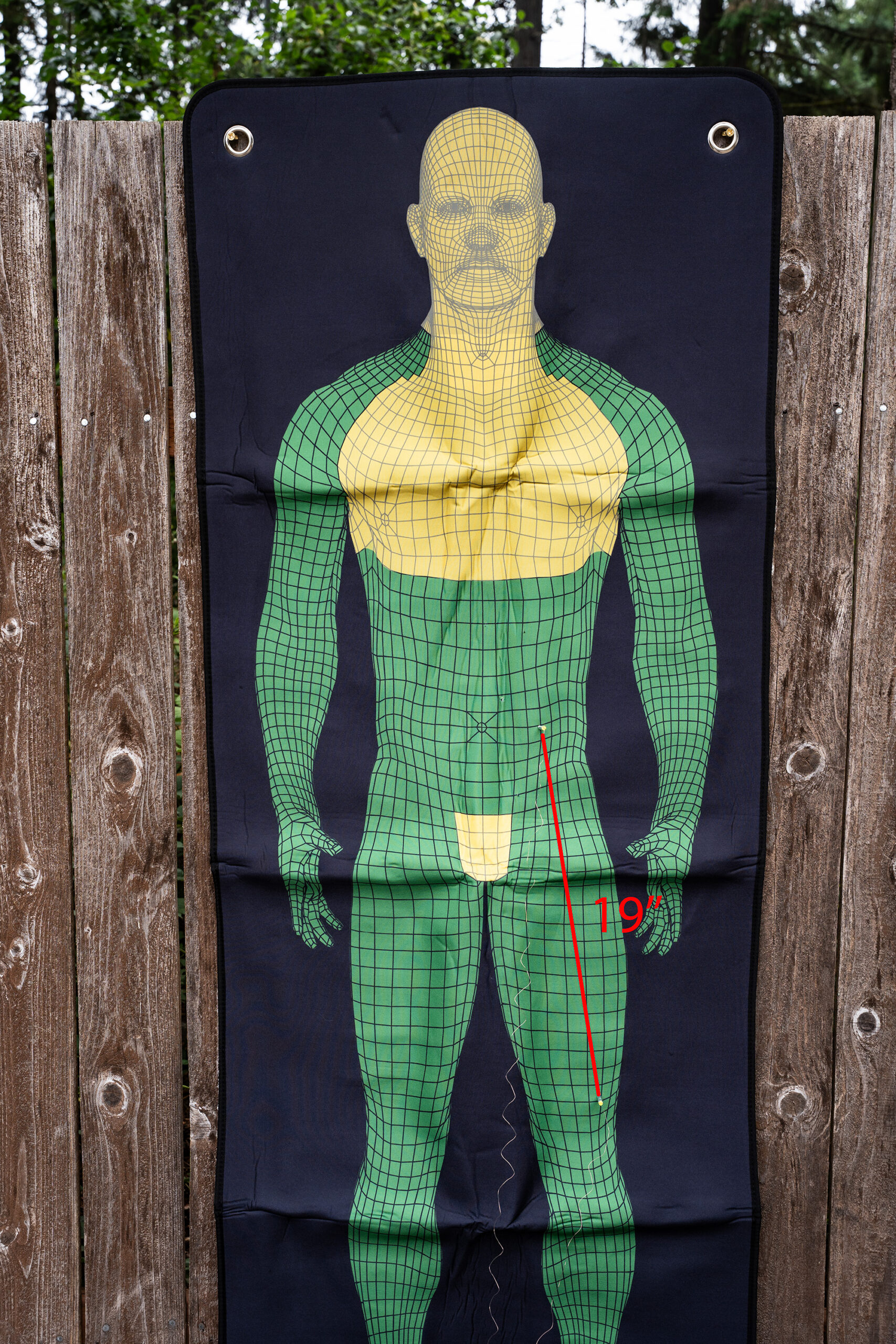
At 15ft fired from a standard Weaver position, the device showed 19” of divergence.
You can see that as the distance increases, probe divergence also increases. The two probes tend to separate horizontally rather than at random, so it is somewhat predictable and repeatable. The 15-foot max range is attainable; however, you will need to take mental note of the drop.
With this I think between 7 and 15 feet is where you will have the better on target effect. Closer distances you still provide greater divergence for conduction than you would with a simple contact stun.
Potential hangups:
The PULSE 2 Manual lists out the possible failure points shown below:
- “Loose or Thick Clothing. If the probes lodge in clothing and are too far away from the attacker, energy weapon effectiveness may be reduced.
- Miss or Single Probe Hit. The electrical current must pass between the probes. If one probe misses, the energy weapon will not be effective. You may consider purchasing a TASER 7 Home Defense energy weapon (available on taser.com), which is a 2-shot device that deploys a second cartridge immediately with a second trigger pull.
- Low Nerve or Muscle Mass. If the probes impact in an area where there is very little muscle mass (e.g., the side of the rib cage), the effectiveness may be reduced.
- Limited Probe Spread. Probe spreads of less than 12 inches/30 cm (including contact-stun) result in reduced energy weapon effectiveness. They can, however, still function as a pain-compliance device.
- Wires Break. If a wire breaks (e.g., during a struggle), the current will not flow to the probes. Contact-”
I appreciate TASER being forthcoming with this information as it pertains to a self-defense tool. Their sharing failure points in such a transparent way is a show of faith. Part of preparedness is knowing where your equipment is likely to fail. This info may also help you decide where this tool fits in your kit. To reiterate, I think it is essential to review the online manual, as it thoroughly explores capabilities and limitations.
The two pitfalls that I see being most prevalent are related to single-probe hits and loose/thick clothing, which is why trying the device and understanding how it performs downrange is very important in my eyes. Another point of note is that TASER clearly states that these devices should be kept away from moisture; they are not waterproof, and exposure to water could cause numerous issues, as TASER outlines in the manual. I think if they could do a water resistance improvement on future devices that would be a great value add, however, I understand the actual application for this product inherently limits direct exposure to water.
If Taser were able to bring some of the multi-shot capabilities to this device like seen on the X2 or TASER 7 while maintaining a form factor similar to the PULSE 2, it would be a welcome improvement. While the device can be reloaded, it is slow to do- a second shot on tap for the instance that a failure does occur would add a lot of confidence to this product.
Safe Escape Replacement:
Beyond the surface-level performance, I would like to take a moment to discuss what TASER does to truly drive this system home and demonstrate care for their customers. TASER offers a Safe Escape Product Replacement Guarantee, which allows for the replacement of your TASER Pulse 2 if it is used in self-defense. The only things they require are proof of purchase, a police report, and your contact/shipping information. This is an awesome customer service angle that shows they do think about the user even if they unfortunately need to deploy one of their products. More importantly, this means that if you deploy your Pulse 2, you can drop it and safely escape from your attacker while it continues to incapacitate them with that “up to 30-second” stun time.
Closing thoughts:
After spending some time with this device, I now have a better appreciation for what AXON/TASER is thoughtfully bringing to market for civilians. I think it offers good capabilities within its niche. I am happy to see TASER bringing more self-defense tools to the civilian market. Where this device fits into your life is entirely up to you, but having additional options available for less lethal self-defense is a major win for the civilian market.
Where To Buy
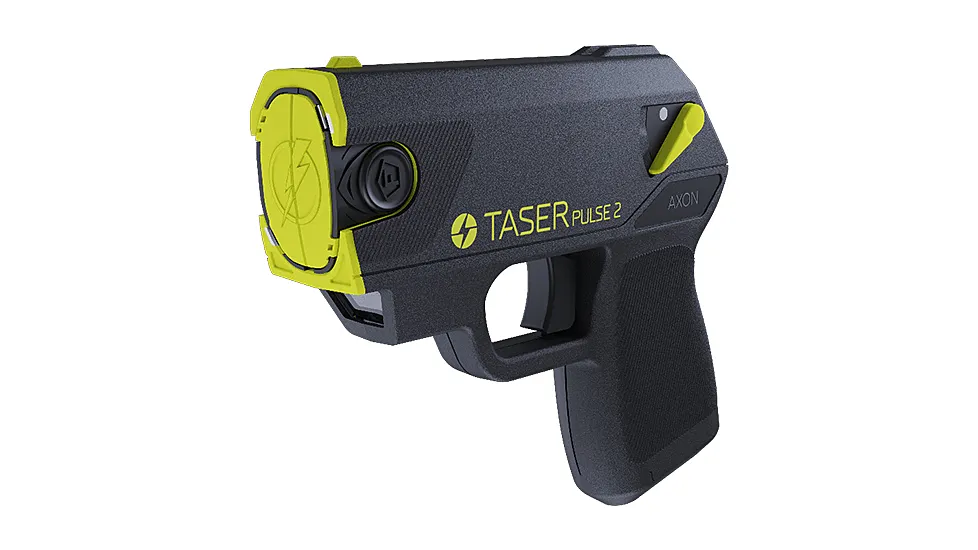
Read the full article here

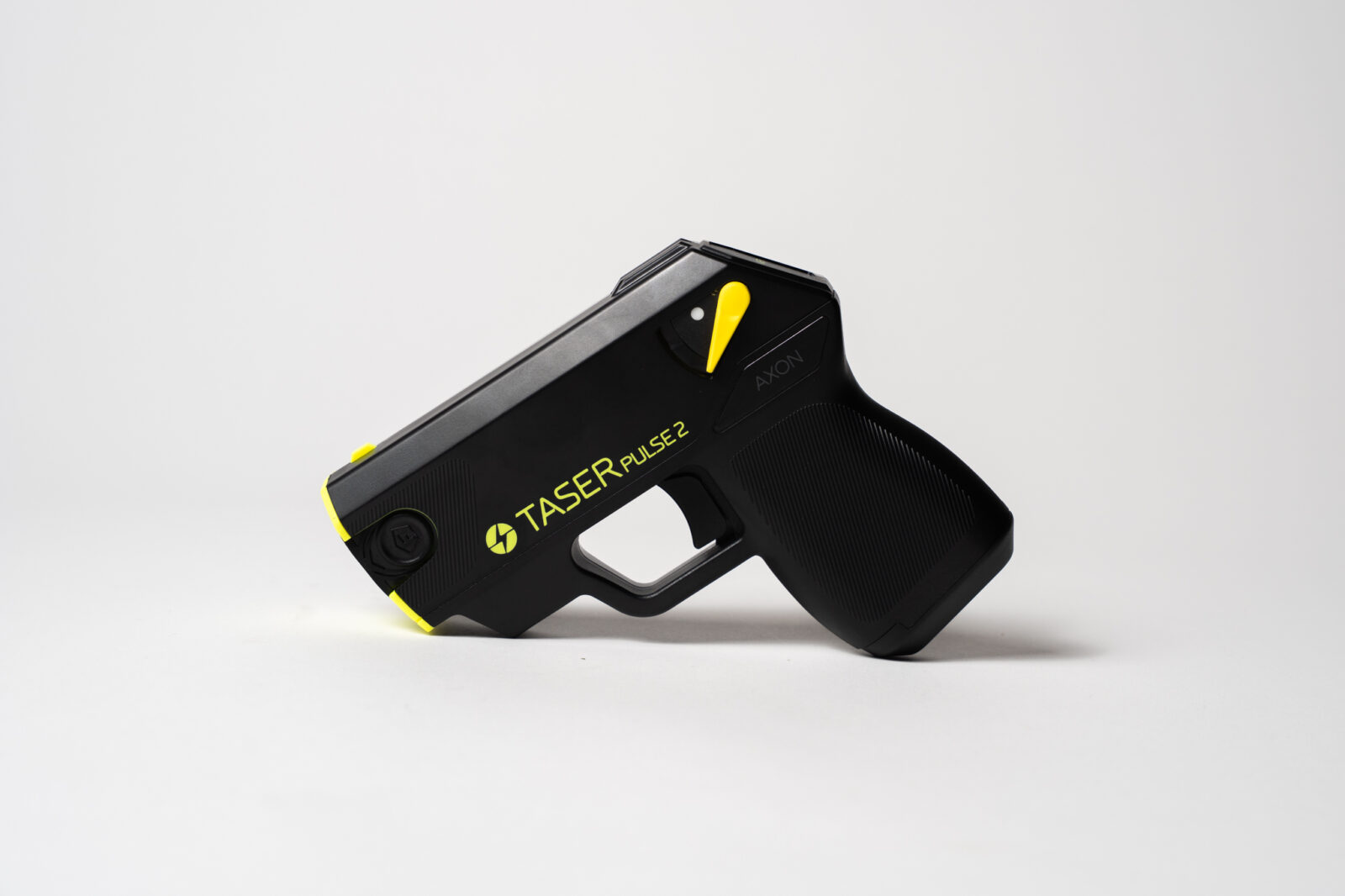
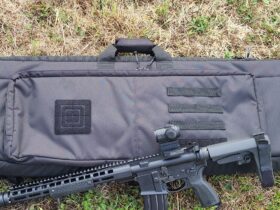

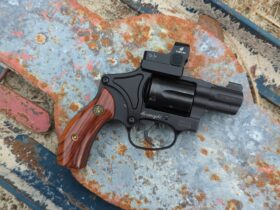
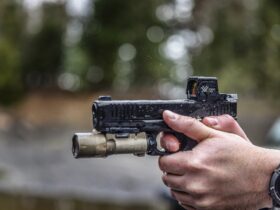
Leave a Reply